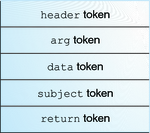| Skip Navigation Links | |
| Exit Print View | |

|
System Administration Guide: Security Services Oracle Solaris 11 Express 11/10 |
| Skip Navigation Links | |
| Exit Print View | |

|
System Administration Guide: Security Services Oracle Solaris 11 Express 11/10 |
1. Security Services (Overview)
Part II System, File, and Device Security
2. Managing Machine Security (Overview)
3. Controlling Access to Systems (Tasks)
4. Virus Scanning Service (Tasks)
5. Controlling Access to Devices (Tasks)
6. Using the Basic Audit Reporting Tool (Tasks)
7. Controlling Access to Files (Tasks)
Part III Roles, Rights Profiles, and Privileges
8. Using Roles and Privileges (Overview)
9. Using Role-Based Access Control (Tasks)
10. Role-Based Access Control (Reference)
Part IV Oracle Solaris Cryptographic Services
13. Oracle Solaris Cryptographic Framework (Overview)
14. Oracle Solaris Cryptographic Framework (Tasks)
15. Oracle Solaris Key Management Framework
Part V Authentication Services and Secure Communication
16. Using Authentication Services (Tasks)
19. Using Solaris Secure Shell (Tasks)
20. Solaris Secure Shell (Reference)
21. Introduction to the Kerberos Service
22. Planning for the Kerberos Service
23. Configuring the Kerberos Service (Tasks)
24. Kerberos Error Messages and Troubleshooting
25. Administering Kerberos Principals and Policies (Tasks)
26. Using Kerberos Applications (Tasks)
27. The Kerberos Service (Reference)
Part VII Oracle Solaris Auditing
28. Oracle Solaris Auditing (Overview)
29. Planning for Oracle Solaris Auditing
30. Managing Oracle Solaris Auditing (Tasks)
31. Oracle Solaris Auditing (Reference)
Files Used in the Audit Service
Rights Profiles for Administering Auditing
Auditing and Oracle Solaris Zones
An audit record is a sequence of audit tokens. Each audit token contains event information such as user ID, time, and date. A header token begins an audit record, and an optional trailer token concludes the record. Other audit tokens contain information relevant to the audit event. The following figure shows a typical audit record.
Figure 31-2 Typical Audit Record Structure

Audit record analysis involves post-selecting records from the audit trail. You can use one of two approaches to parsing the binary data that was collected.
You can parse the binary data stream. To parse the data stream, you need to know the order of the fields in each token, and the order of tokens in each record. You also need to know the variants of an audit record. For example, the ioctl() system call creates an audit record for “Bad file name” that contains different tokens from the audit record for “Invalid file descriptor”.
For a description of the order of binary data in each audit token, see the audit.log(4) man page.
For a description of the order of tokens in an audit record, use the auditrecord command. Output from the auditrecord command includes the different formats that occur under different conditions. Square brackets ([]) indicate that an audit token is optional. For more information, see the auditrecord(1M) man page. For examples, see also How to Display Audit Record Definitions.
You can use the praudit command. Options to the command provide different text output. For example, the praudit -x command provides XML for input into scripts and browsers. praudit output does not include fields whose sole purpose is to help to parse the binary data. Note that the order and format of praudit output is not guaranteed between Oracle Solaris releases.
For examples of praudit output, see How to View the Contents of Binary Audit Files.
For examples of praudit output for each audit token, see the individual tokens in the Audit Token Formats section.